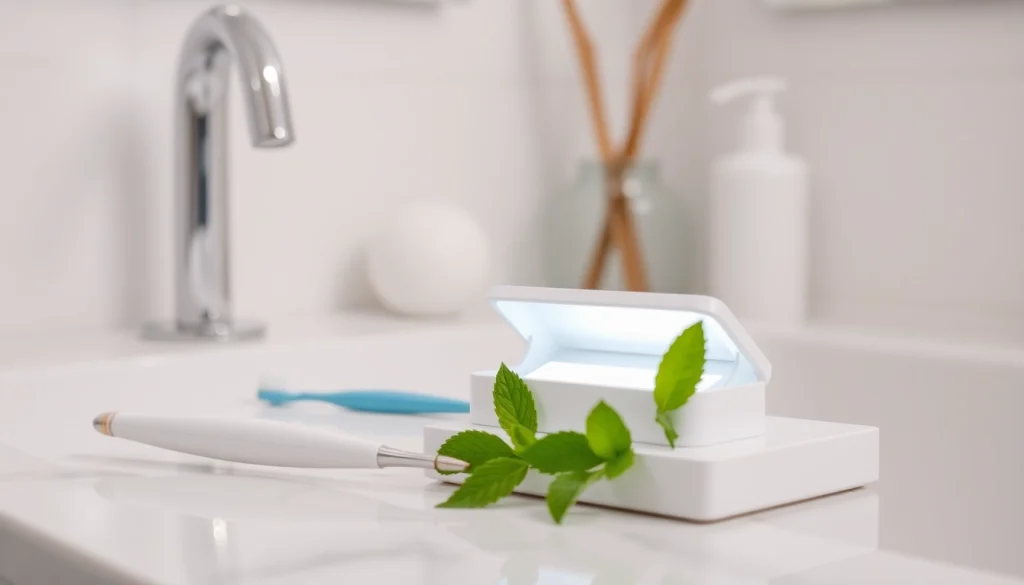Brighten Your Smile: The Ultimate Guide to Teeth Whitening Kits for Radiant Results

Understanding Teeth Whitening Kits
Teeth whitening kits have gained significant popularity in recent years as individuals seek easier, more affordable ways to achieve a brighter smile from the comfort of their home. These kits typically include several components designed to help you lift stains and discoloration from your teeth effectively. Given the myriad of options available, it’s crucial to understand what constitutes a teeth whitening kit, how they work, and their benefits.
What is a Teeth Whitening Kit?
A teeth whitening kit generally consists of products designed explicitly for home use, aimed at removing stains and yellowing from the enamel of your teeth. These kits usually include:
- Whitening gel or solution
- Custom or pre-made mouth trays
- LED lights in some advanced kits
- Desensitizing agents to minimize discomfort
The active ingredients in these products can vary, but they often include hydrogen peroxide or carbamide peroxide, which work to oxidize discolored compounds in the enamel, helping to restore the natural whiteness of your teeth.
Benefits of Using Teeth Whitening Kits
Using teeth whitening kits offers several advantages:
- Cost-Effective: Compared to professional whitening treatments at a dentist, these kits are significantly less expensive.
- Convenience: You can use them at your own pace and in the comfort of your own home.
- Diverse Options: Various formulas and types of kits available on the market cater to different preferences and needs.
- Time Efficient: Most kits provide noticeable results in a matter of days, with minimal time spent on application.
- Customizable: Some kits offer customizable trays, allowing you to adjust the method in a way that fits comfortably in your mouth.
Popular Ingredients in Teeth Whitening Kits
The effectiveness of a teeth whitening kit often hinges on its active ingredients. Here are some common components that contribute to whitening:
- Hydrogen Peroxide: A common bleaching agent that penetrates the enamel and breaks down the compounds causing discoloration.
- Carbamide Peroxide: A compound that breaks down into hydrogen peroxide and is often slower-acting, making it a gentler option.
- Sodium Bicarbonate: Acts as a mild abrasive to help lift surface stains.
- Activated Charcoal: Used in some kits for its absorbing properties, though its efficacy is debated.
- Desensitizing Agents: Ingredients like potassium nitrate or fluoride can help to minimize tooth sensitivity often associated with whitening.
How to Choose the Right Teeth Whitening Kit
With the dizzying array of teeth whitening kits available, selecting the right one can be overwhelming. However, by considering a few essential factors, you can make an informed choice that meets your whitening goals.
Factors to Consider
- Type of Whitening Kit: Choose between strips, gels, pens, or trays based on your comfort and preferences.
- Strength of the Bleaching Agent: Consider the concentration of hydrogen peroxide; higher concentrations may yield faster results but can also increase sensitivity.
- Application Method: Assess how easy it is to use the kit and whether you will consistently follow the instructions.
- Time Frame for Results: Different kits promise results in varying time frames; consider your urgency in achieving whiter teeth.
- Brand Reputation: Research brands to find those with proven effectiveness and customer satisfaction.
Comparing Different Types of Kits
Teeth whitening kits come in a variety of forms, each with its pros and cons:
- Whitening Strips: Easy to use with minimal mess; however, they may cover less surface area compared to trays.
- Whitening Gels with Trays: Custom-fit trays provide even coverage, but they may require more setup time.
- Whitening Pens: Great for targeted application, but often less powerful than gels or strips.
- LED Whitening Kits: Some kits incorporate light technology to enhance results, yet the effectiveness can vary.
Reading Reviews and Testimonials
Before making a purchase, it’s beneficial to read user reviews and testimonials. They provide first-hand insights into the effectiveness and usability of various teeth whitening kits. Look for consistent feedback on:
- Results Achieved: Check for before and after photos or claims about the degree of whitening.
- Sensitivity Issues: Pay attention to reports of sensitivity during and after use.
- Ease of Use: Consider user experiences with the application process.
- Customer Support: Effective customer service should be available for queries regarding application or aftercare.
Applying Your Teeth Whitening Kit Effectively
To maximize the benefits of your teeth whitening kit, proper application is key. Here’s a thorough guide on how to use your selected kit effectively.
Step-by-Step Application Guide
- Read Instructions: Always start by thoroughly reading the instructions provided with your kit. Each product may have specific guidelines.
- Prepare Your Teeth: Brush and floss your teeth thoroughly to remove plaque and debris that could inhibit whitening.
- Measure and Apply Product: If your kit includes gel, use the applicator to measure out the specified amount. Apply it evenly to the trays or your teeth, as directed.
- Use the Trays/Strips: If your kit includes trays, place them in your mouth as instructed. For strips, apply them to the front surfaces of your teeth.
- Set a Timer: Keep track of the time as per the instructions, usually ranging from 15 to 30 minutes.
- Remove and Rinse: After the designated time, remove the trays or strips and rinse your mouth with water and brush your teeth gently.
- Follow-Up: Note any recommendations for follow-up treatments, which may enhance and prolong your results.
Common Mistakes to Avoid
- Not Following Instructions: Skipping steps or adhering to incorrect timing can reduce the effectiveness of the product.
- Overusing the Kit: Using whitening products too frequently can damage enamel and cause tooth sensitivity.
- Ignoring Sensitivity: If you experience pain or discomfort, stop using the kit and consult with your dentist.
- Neglecting Oral Hygiene: Not maintaining good oral hygiene can lead to poor results.
Safety Tips for Using Teeth Whitening Kits
Safety should always be a priority when using teeth whitening kits. Here are some tips:
- Consult a Dentist: Speak with a dental professional before beginning any whitening regimen, especially if you have existing dental issues.
- Use as Directed: Adhere strictly to the product’s directions for optimal safety and effectiveness.
- Monitor Sensitivity: Pay attention to how your teeth and gums respond during usage and stop if discomfort arises.
- Limit Staining Foods and Drinks: After whitening, it might be prudent to limit coffee, tea, and red wine to maintain results.
Maintaining Your Results After Whitening
Achieving whiter teeth is just the beginning—maintaining those results is crucial for lasting beauty. Here are essential practices to keep your smile bright.
Best Practices for Oral Hygiene
Establishing a thorough oral hygiene routine is fundamental in maintaining your newly whitened smile:
- Brush Twice Daily: Incorporate a fluoride toothpaste to strengthen enamel.
- Floss Daily: This helps remove plaque and prevent staining between teeth.
- Use a Mouthwash: A mouthwash without alcohol can aid in preventing discoloration and maintaining freshness.
- Regular Dental Cleanings: Schedule biannual visits to your dentist for professional cleaning and advice.
Foods to Avoid After Whitening
Some foods and drinks can stain your teeth more easily right after whitening:
- Coffee and Tea: Both can cause yellowing over time. If consumed, try using a straw to minimize contact with teeth.
- Red Wine: Known for its potent staining properties; consider moderation.
- Colored Sauces: Such as soy or tomato sauce can leave lingering stains.
- Dark Berries: While healthy, fruits like blueberries and blackberries can stain your teeth.
Recommended Follow-up Products
To help maintain your teeth’s brightness, consider the following:
- Whitening Toothpaste: For daily maintenance and additional stain removal.
- Whitening Pens: For quick spot whitening if you notice areas that need attention.
- Regular Use of Teeth Whitening Strips: These can be used in moderation for touch-ups.
- Bonding Agents: Consider using fluoride treatments to strengthen the enamel and maintain luster.
Understanding the Cost and Value of Teeth Whitening Kits
Determining the right kit for you goes beyond its upfront cost; it’s about the value you get for your investment. Understanding how these kits stack up against professional treatments can guide you in your decision.
Pricing Comparison with Professional Treatments
Professional teeth whitening treatments in a dentist’s office can range from $500 to $1000 depending on the method involved. In contrast, at-home whitening kits often range from $20 to $200. Here’s how they compare:
- Efficacy: Professional treatments tend to show quicker, more noticeable results due to higher concentrations of bleaching agents. At-home kits can still be effective but generally require more time and consistency to achieve similar results.
- Application Method: Professional treatments are supervised by a dentist, who can ensure safety and address sensitivity concerns during the process.
- Frequency: At-home kits can be used regularly, allowing for ongoing maintenance without subsequent hefty fees.
Is it Worth the Investment?
The worth of a teeth whitening kit heavily depends on your specific needs and results. If you’re looking for a fast, professional-grade result, a dentist’s treatment might be your best bet. If your aim is to maintain your smile with a less intensive approach, then a home kit could be perfect. Ask yourself:
- What are your personal goals for teeth whitening?
- How sensitive are your teeth, and are you comfortable applying treatments yourself?
- What is your budget for maintaining your smile?
How to Get the Best Deals on Teeth Whitening Kits
To ensure you’re getting the best price on teeth whitening kits, consider the following strategies:
- Buy Online: E-commerce platforms often provide competitive pricing and can feature sales or discounts.
- Check Social Media: Brands frequently run promotions on their social channels or provide coupon codes.
- Subscribe for Notifications: Signing up for newsletters might grant you access to exclusive deals and product launches.
- Bulk Buying: Some retailers offer discounts for purchasing multiple kits at once, which could be beneficial for long-term maintenance.






